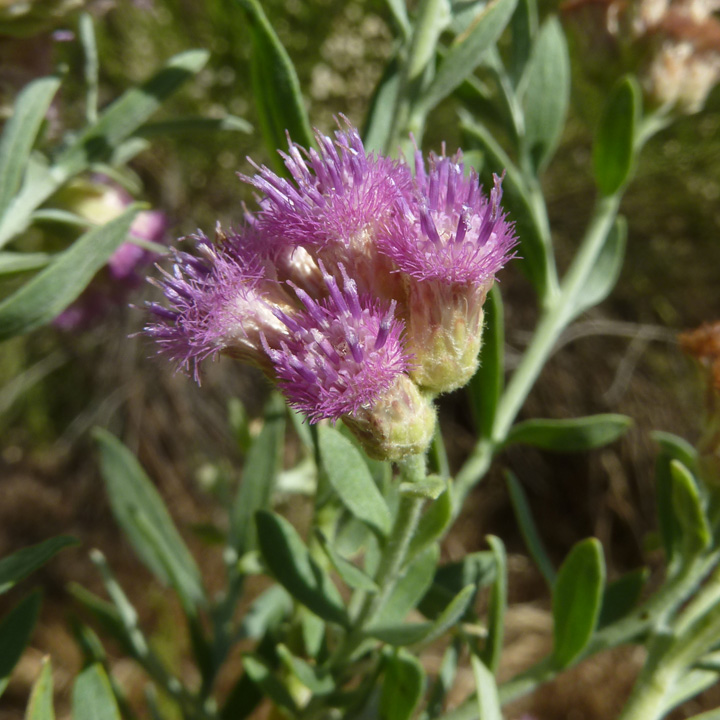
|
Family: Asteraceae |
Annuals, perennials, subshrubs, shrubs, or trees (usually fetid-aromatic), (20-)50-200(-500) cm; taprooted or fibrous-rooted. Stems erect, simple or branched, seldom winged (see P. sagittalis), usually puberulent to tomentose and stipitate- or sessile-glandular, sometimes glabrous. Leaves cauline, alternate; petiolate or sessile; blades mostly elliptic, lanceolate, oblanceolate, oblong, obovate, or ovate, bases clasping or not, margins entire or dentate, abaxial faces mostly arachnose, puberulent, sericeous, strigose, or villous and/or stipitate- or sessile-glandular, adaxial similar or glabrate or glabrous. Heads disciform, in corymbiform or paniculiform arrays (flat-topped or ± elongate). Involucres mostly campanulate, cupulate, cylindric, hemispheric, or turbinate, 3-10(-12) mm diam. Phyllaries persistent or falling, in 3-6+ series, mostly ovate to lanceolate or linear, unequal. Receptacles flat, epaleate. Peripheral (pistillate) florets in 3-10+ series, fertile; corollas creamy white, whitish, yellowish, pinkish, lavender, purplish, or rosy. Inner (functionally staminate) florets 2-40+; corollas creamy white, whitish, yellowish, pinkish, lavender, purplish, or rosy, lobes (4-)5. Cypselae oblong-cylindric, ribs 4-8, faces strigillose and/or minutely sessile-glandular or glabrous (in the flora, only P. sericea); pappi persistent or tardily falling, of distinct or basally connate, barbellate bristles in 1 series. x = 10. As currently treated, Pluchea is a heterogeneous group of species, variable in habit (trees and shrubs to herbs) and foliar, floral, and fruit morphology. The American, primarily herbaceous, species are divided into groups (G. L. Nesom 1989): sect. Pluchea, sect. Amplectifolium G. L. Nesom, and sect. Pterocaulis G. L. Nesom. Among the woody species, segregate genera have been recognized (Tessaria Ruiz & Pavón, Berthelotia de Candolle, Eremohylema A. Nelson); boundaries among segregates have not been clearly drawn.
Heads disciform, white to yellow or pink-purple; invol ovoid to broadly campanulate or hemispheric, its bracts firm, imbricate; receptacle flat, naked; outer fls in several series, pistillate, the filiform cor shorter than the style; central fls tubular, perfect, mainly sterile, often with undivided style; anthers filiform-tailed; achenes tiny, 4-6-angled; pappus a single series of capillary bristles; herbs (all ours) or shrubs with alternate, usually toothed lvs. 50, mostly warm reg. Gleason, Henry A. & Cronquist, Arthur J. 1991. Manual of vascular plants of northeastern United States and adjacent Canada. lxxv + 910 pp. ©The New York Botanical Garden. All rights reserved. Used by permission. |
This project was made possible in part by the Institute of Museum and Library Services [MG-70-19-0057-19].
Powered by Symbiota



